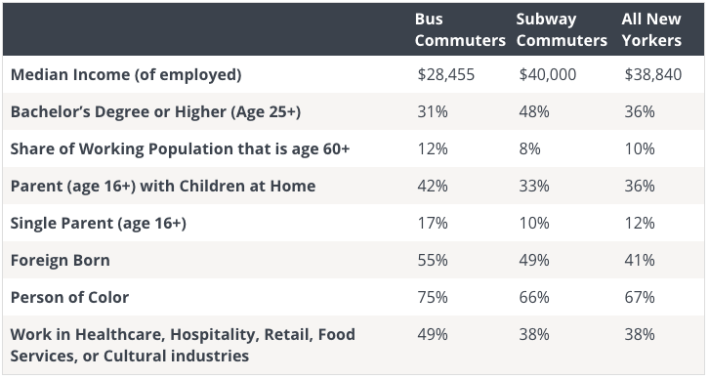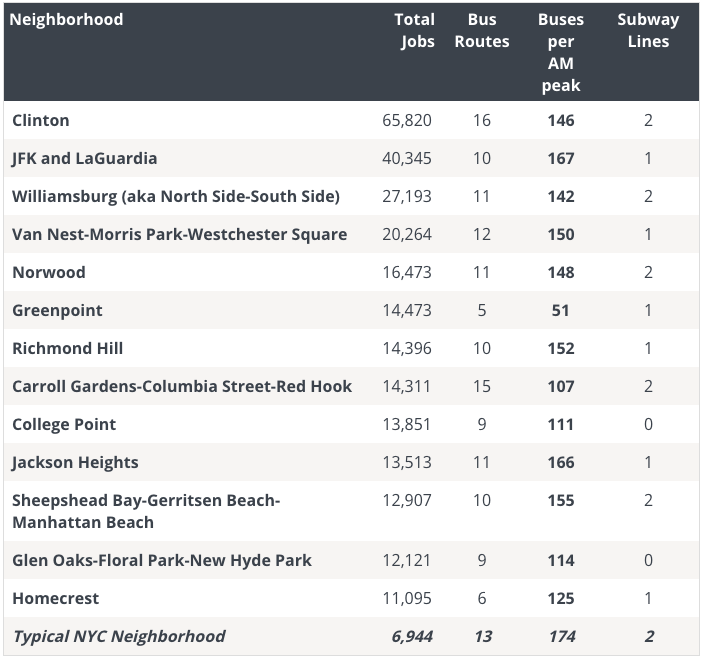The MTA and city government have failed to respond to shifting travel patterns, and that helps explain why bus ridership is plummeting, according to a report released today by Comptroller Scott Stringer.
"Falling ridership, major slowdowns, and a bus infrastructure in decline is having an effect across the five boroughs," Stringer said in a statement. "This cannot be a problem that is swept under the rug -- this is an economic and social imperative that is critical to our future."
Stringer's report embraces the recommendations of the Bus Turnaround Coalition with a focus on modernizing the MTA's bus routes and providing more frequent service. These adjustments are necessary, the comptroller argues, because New Yorkers need to make different types of trips than they used to.
Increasingly, commutes don't touch Manhattan. From 2006 to 2016, the citywide share of jobs located outside Manhattan jumped from 35 percent to 42 percent. The bus network can adapt to handle these shifts in travel patterns, but while commutes have changed, bus service still hews to routes and frequencies that date to an earlier era.
The failure to adapt disproportionately harms lower income New Yorkers, who are more likely to live and work outside Manhattan and more likely to commute by bus.

There's also a mismatch between the types of jobs held by bus commuters and established bus service patterns. Bus commuters are disproportionately likely to work in industries like healthcare, retail, or food services, which don't have hours that align with typical 9-to-5 commuting. On too many routes, however, buses still come too infrequently outside the standard morning and evening rush.
It's no surprise then that a greater share of low-wage workers in New York commute by car (24 percent) than by bus (14 percent).
Stringer's report identifies 12 neighborhoods and two airports with more jobs but less transit service than the average city neighborhood:

The MTA buses that do serve those neighborhoods often follow circuitous routes, sacrificing efficient service to make time-consuming stops at specific locations.

To address present-day travel needs, Stringer calls on the MTA to provide more frequent off-peak service and perform a "comprehensive bus network review" to reflect current commuting patterns. One type of change is specifically aimed at local bus routes that currently converge on major thoroughfares: The report recommends that these local buses instead "cross or terminate" at those major streets, where riders can transfer to high-frequency routes.
Stringer's full report amplifies other recommendations from the Bus Turnaround Coalition, urging the MTA and NYC DOT to pursue widespread implementation of transit signal priority and dedicated bus lanes, citywide all-door boarding, and balanced stop-spacing.
"These strategies can and should be used to fix our buses in the coming months and years, not in decades or a generation," said TransitCenter Deputy Executive Director Tabitha Decker. "Fast and reliable bus service would be a win for riders and the agencies alike."






